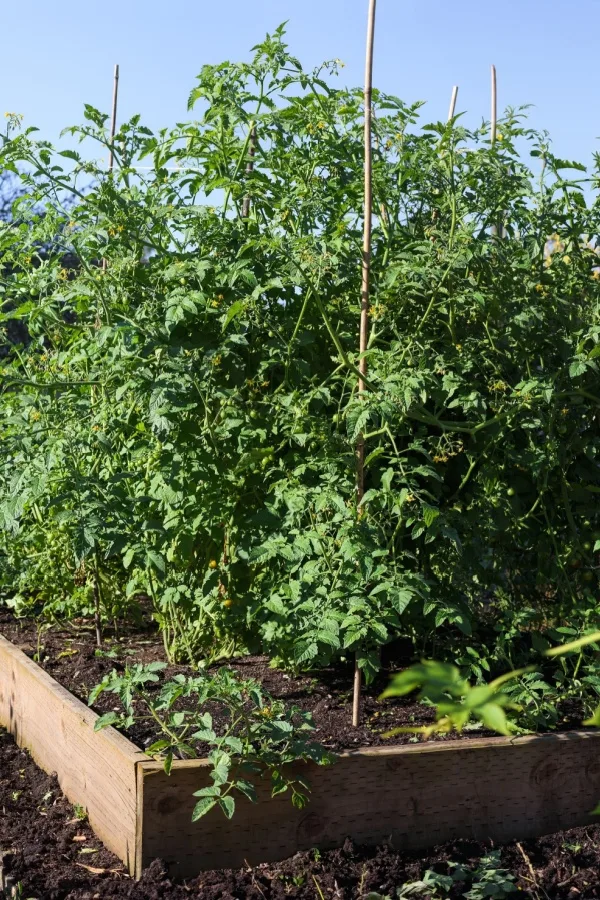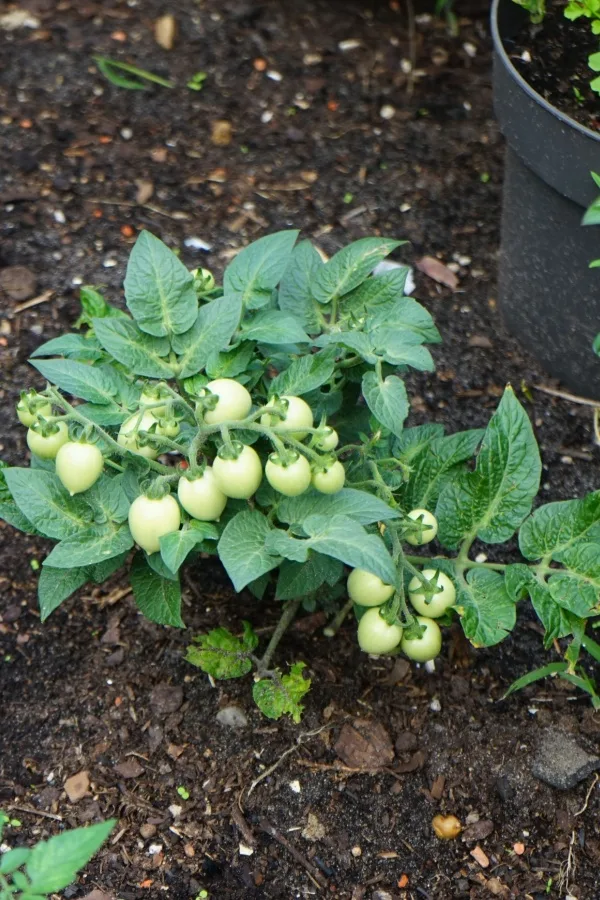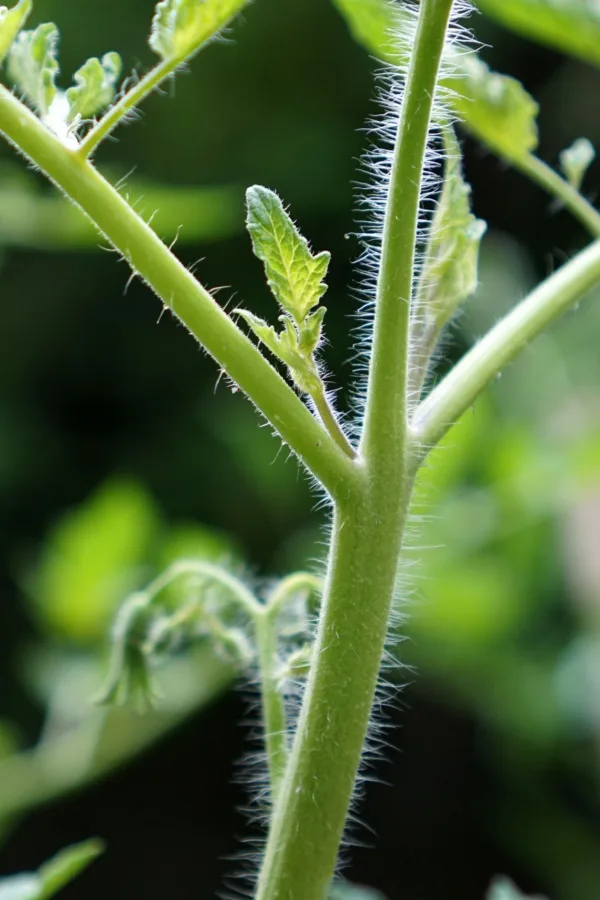One of the most confusing topics for those who love to grow tomatoes centers around the suckers that often grow on their tomato plants – or more importantly, what exactly are they and do you really need to prune them from your plants?
Tomato suckers are the side shoots that grow in between the stems and a branch of a tomato plant. This is the growth that occurs right between the two joints. And are there ever a lot of misconceptions about these renegade branches!
Are there any advantages to removing them or is it better to just leave the plants alone? Can they actually bear flowers and fruit? What happens if you do nothing to your plants and just let everything grow?

Are Suckers Good Or Bad? Why To Prune Tomato Suckers – And How To Do It!
Let’s start by covering what suckers can do. First and foremost, suckers can grow into additional main stems that produce foliage, blooms and fruit. They can even produce their own suckers eventually as well. But just because they can bear fruit doesn’t mean you should allow them to remain.
Failing to prune suckers can result in massive, out-of-control tomato plants. And ones that quickly explode out of their supports or cages.
Not only are plants overly large and unruly, the massive overgrowth can also cause major health and productivity issues for some of your plants. After all, all of that extra foliage makes it difficult for sunlight and pollinators to get to the blooms deep within.
In addition, the larger tomato plants get, the more nutrients and resources they require in order to maintain their huge size – let alone produce blooms and fruit. And all that extra growth can also leave plants more susceptible to disease and fungal issues due to improper airflow.
Good airflow and circulation are required for plants to stay healthy and disease-free. When there is an overgrowth of stems and foliage, sunlight and air cannot reach all parts of the plants.
Why To Prune Tomato Suckers – And How To Do It!
Why Suckers Are An Issue
To begin with, suckers rob the main part of the tomato plant of vital nutrients and resources. Yes, the suckers also produce additional fruit which might sound like a good thing. However, this competition for nutrients will often result in smaller fruit overall that lack flavor.
There are many advantages of pruning tomato plants and removing suckers. The first is that it makes the plants much easier to maintain and harvest from. It’s really easy to miss seeing a growing tomato deep within a tangle of leaves and stems.
In addition, without all that extra foliage, it’s much easier to spot and also treat any pests or diseases that you do find. For example, tomato hornworms love to blend in with the foliage. The more foliage there is, the higher the chances are that you miss seeing the worm’s damage until it’s too late.

Lastly, plants with only one or two main central stems won’t take up nearly as much space in your garden. This allows you to grow more tomato varieties closer together while taking up the same square footage.
There might be fewer tomatoes growing on each plant. But you will be able to enjoy harvesting larger tomatoes that have juicer, richer flavors. But, and this is important, this is only true for larger indeterminate tomatoes that can grow all season long.
When Not To Prune Tomato Suckers
There are two main types of tomatoes, determinate and indeterminate plants. Determinate tomatoes are more compact and set fruit around the same time. These varieties only have a short time frame for growing and producing fruit.
Because of this, you don’t need to prune them aside from removing the lower few stems. In fact, pruning the suckers off of determinate tomatoes can actually reduce your harvest since you might be removing some of the few branches that will end up producing fruit.
Determinate tomatoes include all dwarf varieties that only grow to be under a foot or two tall. Most of the time, these varieties require as much foliage as possible in order to absorb enough energy from the sun to bloom and support ripening fruit.

Indeterminate tomatoes, on the other hand, will continue to push out new foliage and fruit up until the first frost. These plants can get extremely unruly and out of control if all of the suckers are allowed to grow. And it is these plants who benefit the most from removing their suckers. The good news? It’s very easy to do!
How To Prune & Remove Tomato Suckers From Indeterminate Tomato Plants
The earlier you prune the suckers from your indeterminate tomato plants, the easier it will be. To do this, you don’t need any special tools or equipment. In fact, all you need is your fingers!
First, check the v-joint of your tomato plants and branches and look for new growth coming from between them. As soon as you can see the sucker starting to form or grow, simply snap it off with your fingers. It should easily come off with little effort.
For larger stems, you can use a pair of pruners if needed to maintain a clean cut. When using pruners, always be sure to disinfect the pruners with a disinfectant between plants to reduce the risk of transmitting disease. Product Link: Fiskars Micro-Tip Pruning Snips

Check plants weekly and remove any new suckers that grow. You will need to prune your indeterminate tomato plants multiple times throughout the growing season.
In addition to pruning suckers, also remove the bottom stems from both determinate and indeterminate plants. Prune up to the first set of fruiting stems. This helps to open up the plants and helps to keep the foliage up off the soil.
Here’s to pruning tomato suckers correctly to enjoy healthier, tidy plants and bigger, tastier fruit!
I Grow Tomatoes
Follow Our Facebook Page For Even More Great Tomato Growing Tips! I Grow Tomatoes Facebook Page
I Grow Tomatoes is a website created for those who love all things about tomatoes – from planting and growing – to cooking and canning! We publish two articles every week, 52 weeks a year. Sign up today to follow via email! This article may contain affiliate links.
